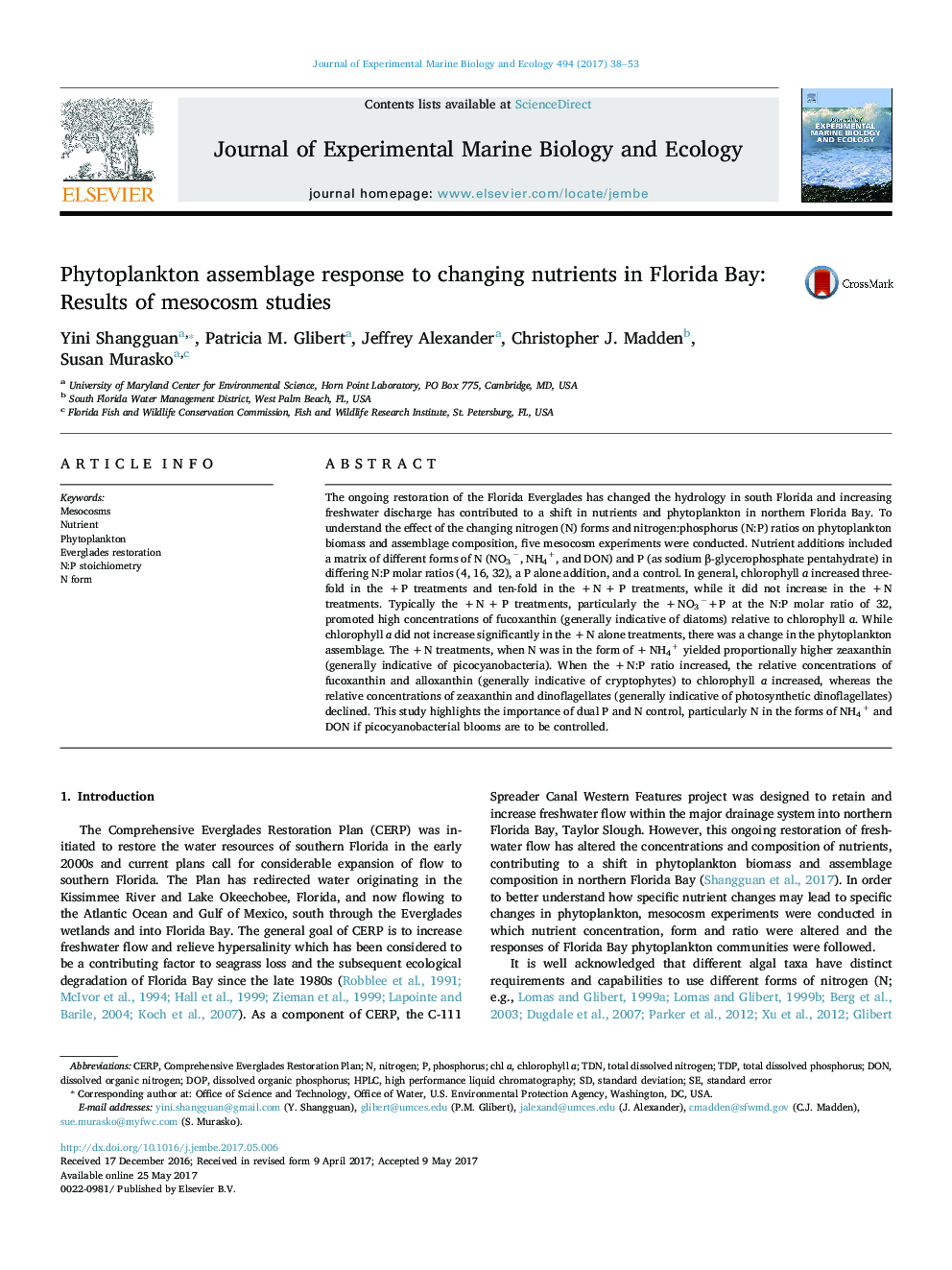| Article ID | Journal | Published Year | Pages | File Type |
|---|---|---|---|---|
| 5744486 | Journal of Experimental Marine Biology and Ecology | 2017 | 16 Pages |
â¢Nutrient enrichment mesocosm experiments were performed over 5 seasons.â¢Phytoplankton biomass increased substantially with + P enrichment.â¢The dominant taxa changed to more picocyanobacteria when enriched with NH4+.â¢To control picocyanobacterial blooms, dual N and P control is recommended.
The ongoing restoration of the Florida Everglades has changed the hydrology in south Florida and increasing freshwater discharge has contributed to a shift in nutrients and phytoplankton in northern Florida Bay. To understand the effect of the changing nitrogen (N) forms and nitrogen:phosphorus (N:P) ratios on phytoplankton biomass and assemblage composition, five mesocosm experiments were conducted. Nutrient additions included a matrix of different forms of N (NO3â, NH4+, and DON) and P (as sodium β-glycerophosphate pentahydrate) in differing N:P molar ratios (4, 16, 32), a P alone addition, and a control. In general, chlorophyll a increased three-fold in the + P treatments and ten-fold in the + N + P treatments, while it did not increase in the + N treatments. Typically the + N + P treatments, particularly the + NO3â+P at the N:P molar ratio of 32, promoted high concentrations of fucoxanthin (generally indicative of diatoms) relative to chlorophyll a. While chlorophyll a did not increase significantly in the + N alone treatments, there was a change in the phytoplankton assemblage. The + N treatments, when N was in the form of + NH4+ yielded proportionally higher zeaxanthin (generally indicative of picocyanobacteria). When the + N:P ratio increased, the relative concentrations of fucoxanthin and alloxanthin (generally indicative of cryptophytes) to chlorophyll a increased, whereas the relative concentrations of zeaxanthin and dinoflagellates (generally indicative of photosynthetic dinoflagellates) declined. This study highlights the importance of dual P and N control, particularly N in the forms of NH4+ and DON if picocyanobacterial blooms are to be controlled.
